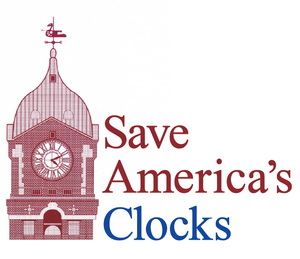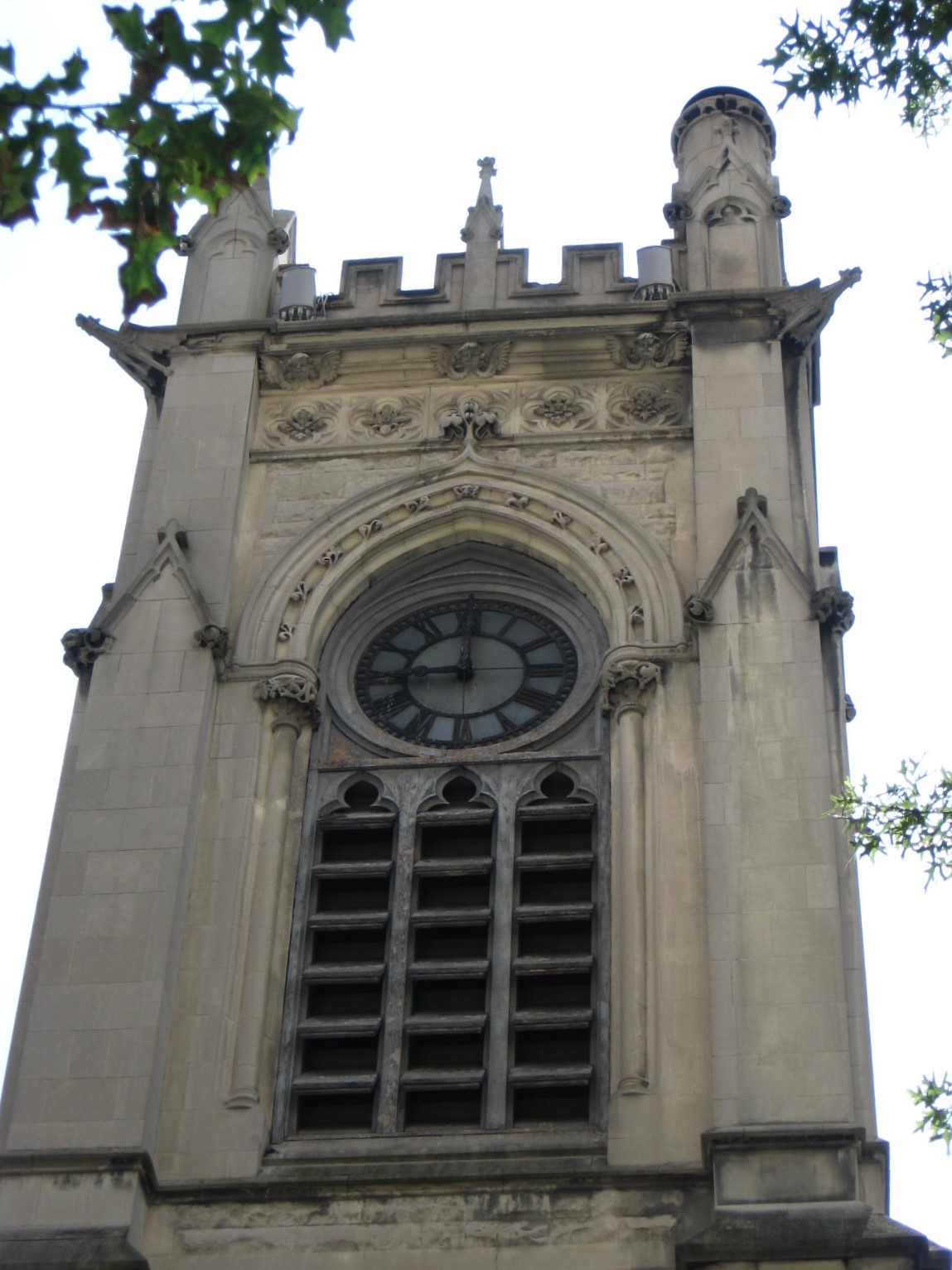Madison Avenue
Photo: Vinit Parmar.
Madison Avenue
#1 (near East 24th Street.
Met-Life Building.
The incredible three-story Self Winding clock on the MetLife tower, ornamented with astonishing detailed marble and mosaic tile work, is perhaps the city's most impressive timepiece.
Photos courtesy of MetLife Archives.
Madison Avenue
#660 (near East 61st Street)
Photo: Vinit Parmar.
New York Plaza
#4
Photo: Vinit Parmar.
Ninety First Street
#302 (Near West End Ave)
Annunciation Greek Orthodox Church
the former Fourth Presbyterian Church, now Annuncation Greek Orthodox Church, at West End Avenue and 91st Street. Built in 1893-94,it was designed by the firm of Heins & LaFarge, It's a small church with a delightful clock tower with at least 3 dials (not working).
Photos: Jeremy Woodoff, 2017
Ninety Ninth Street
#225
St. Michael's Church at 99th Street and Amsterdam Ave
Received landmark designation in 2016.
Park Avenue
#230
Helmsley Building
Photo: Tom Bernardin
Park Avenue
#301
Weldon Astoria
Photo: Tom Bernardin
Park Ave South
#386
Working Doorway Clock.
Photo: Rick Burrows, Fall 1999.
Park Avenue South
#470 (near East 32nd Street)
(The Schwarzenbach Buildings,
Known as The Silk Clock)
Moving figures signal the hour.
One of three mechanical clocks in Manhattan.
The clock on the Schwarzenbach Building on Park Avenue and 32nd Street, known as the “Silk Clock” because of the building’s roots in the silk industry was installed by Seth Thomas in 1926. The No. 15 P.W time and hour strike clock is topped by figures of a wizard, a blacksmith and a woman. The figures were sculpted by William Zorach and the terra-cotta moths on the each side of the clock were carved by his wife, Marguerite, both famed American modern artists of the early half of the twentieth century. The clock was devised to chime twelve times on the hour as the wizard waves his wand. A woman holding lilies in her hand, rises and twirls around as the blacksmith forges a sword with a hammer. According to a Seth Thomas catalog, the movement represents “the magical development of the raw silk to the finished product.” When functioning, the clock is one of the few that still runs the old-fashioned way with a weight-driven pendulum movement.
Photo: Rick Burrows, 1999, Chris Desantis, 2016, Tom Bernardin, 2017
Check out this YouTube link.
Park Avenue
#1140 (near 91st Street)
The Brick Presbyterian Church
The Brick Presbyterian Church on Park Avenue and 91st Street is the third location for the church, which has been in continuous operation since 1767. The first church was built on Beekman Street in downtown Manhattan to accommodate the numerous Presbyterian patrons who often found attending service in the crowded First Presbyterian Church on Wall Street difficult. Like other churches in the area, the Brick Presbyterian Church had a clock on its steeple, probably imported from England. The church moved to 37th Street and Fifth Avenue as the population shifted north. One year later, in keeping with tradition the church had a tower clock mechanism installed by H. Sperry & Co. in its steeple. The mechanism was subsequently serviced by A. S. Hotchkiss and by the Seth Thomas Co. When funeral services were held here for Mark Twain after his death in 1910, the church was visited by three thousand people in one day. As the congregation moved further uptown, so did the church erecting its third building in 1940. The Sperry mechanism was moved with the church to its present located on Park Avenueand 91st Street and is still in working order today.
(Courtesy of Clocks of New York: An Illustrated History, By Chris Desantis)
Park Row
#1
Millenium Park.
Millenium Clock.
MAYOR GIULIANI JOINS THE DOWNTOWN ALLIANCE TO HONOR DAVID ROCKEFELLER AT CLOCK DEDICATION CEREMONY
New York, NY-At a dedication ceremony held today at Millennium Park in Downtown Manhattan, Mayor Rudolph W. Giuliani and Downtown Alliance Chairman Robert Douglass commemorated David Rockefeller for his contributions to New York City.
The Mayor unveiled a 15'-4", four-sided bronze pedestal clock, which was taken from the original mold of the classic E. W. Howard Post Clock. The clock is designed in a traditional Heritage/Courthouse Style that was manufactured between 1850 and 1920. The clock is raised on a small granite base on which a bronze commemorative plaque is placed. The entire structure weighs approximately 3,500 pounds.
"This clock is dedicated to David Rockefeller, a man who has given the better part of his life to ensuring that Lower Manhattan remains a vibrant commercial and civic center," said Mayor Giuliani. "As a leader of Chase Bank in the 1950's, David was instrumental in convincing the bank to build its new headquarters in Lower Manhattan. Later, as Chairman of the Downtown-Lower Manhattan Association, David was the driving force behind plans to develop the South Street Seaport, build Battery Park City and construct the World Trade Center. The revitalized Lower Manhattan that New Yorkers know today bears the mark of his planning and vision, and it is only appropriate that this clock, located in Millennium Park, be dedicated to a man who has contributed so much."
Working closely with George Vellonakis, the architect of City Hall Park, clock creatorCanterbury Designs strove not only to maintain the integrity and design of this tradition clock, but also to ensure it was harmonious with the 19th century design of the newly restored City Hall Park.
"The installation of this clock has provided the opportunity for all of us Downtown to say a most well-deserved "thank you" to David Rockefeller, a man who has done more for Downtown, over a longer period, than anyone," said Robert R. Douglass. "From his time as assistant to another indomitable mayor, Fiorello LaGuardia, to his years as head of the Chase and the Downtown-Lower Manhattan Association, David's vision, perseverance and great skill laid the groundwork for today's success."
The clock denotes the entrance to Downtown and provides a sense of arrival and welcome as millions of people every year cross the threshold into the greatest financial district in the world. It is a gift from the Downtown Alliance to New York City to mark the heroic efforts the mayor has undertaken to rescue downtown from the brink of collapse to the thriving economic engine it is today.
"My first job right after completing graduate school in 1940 was with Mayor LaGuardia at City Hall," said David Rockefeller. "Following 3 years of wartime service in the Army, I went to work for the Chase National Bank at 18 Pine Street, where I remained for 35 years. I still return frequently to Lower Manhattan, even thought my office is in Rockefeller Center so my working life has revolved around this area. Our great city was born in Lower Manhattan, and I believe it will always be its vibrant financial center. I applaud Mayor Giuliani's decision to restore City Hall Park and I am honored that the Downtown Alliance, led by its Chairman, Bob Douglass, donated this magnificent clock in my name."
The clock is one element of the Downtown New York Street Scape Plan, a comprehensive program that includes the installation of new wayfinding and traffic signs, new street furniture, new street lighting, and the reconstruction of Broadways sidewalks and curbs. Ultimately, the new street scape will communicate the spirit of Downtown as a place that combines the best of the city's past with the technological promise of its future, and will create a more welcoming place for people to work, live and visit.
THIS CLOCK IS A GIFT TO THE CITY OF NEW YORK FROM THE ALLIANCE FOR DOWNTOWN NEW YORK, INC. IN HONOR OF DAVID ROCKEFELLER
WHOSE EFFORTS ON BEHALF OF NEW YORK CITY AND DOWNTOWN, FROM HIS TIME AS ASSISTANT TO MAYOR FIORELLO LAGUARDIA TO HIS YEARS AS CHAIRMAN OF THE CHASE MANHATTAN BANK AND THE DOWNTOWN-LOWER MANHATTAN ASSOCIATION, PROVIDED THE EXTRAORDINARY CIVIC LEADERSHIP THAT GUIDED DOWNTOWN FOR OVER HALF A CENTURY.
PRESENTED OCTOBER 2000.
Photo: Vinit Parmar.
Park Avenue
#1841
Working
Photo: Tom Bernardin
Park Row
#34
City Hall Park.
J&R Computer World working clock.
Building to be demolished for skyscraper.
Photo: Tom Bernardin, Wayne Beugg, June 2001.
Park Row
#41 (East of City Hall Park)
Photo: Wayne Beugg, June 2001.
Pennsylvania Station
Seventh & Eighth Avenues (between 31st and 33rd Streets)
“Eclipsed Time” can be found inside Pennsylvania Station. Maya Lin, artist and architect best known for the Vietnam War Memorial in Washington, D.C. designed the thirty eight feet long elliptical clock that was installed on the ceiling of station in 1995. The clock face is a circular piece of frosted glass backed by a light source. As the hours pass from noon to midnight, the fiber-optic light is slowly eclipsed by a moving disk showing the numbers of the hour with the glass of the clock face gradually changing from being brilliantly lit to total darkness.






























